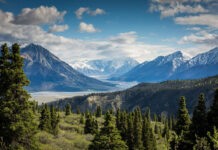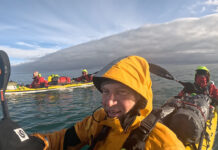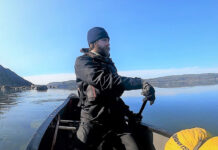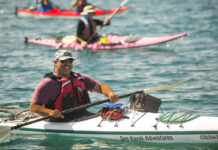Along the lonely stretch of asphalt joining the northern Ontario towns of North Bay and Thunder Bay there are 19 Tim Hortons coffee shops and 11 larger-than-life roadside mascots erected to remind travellers that there is nothing more memorable about these towns than a large double-double and a honey cruller donut to go.
New Liskeard with its Holstein cow (built by local canoe builder Scott Canoe) is the first town. Chimo the polar bear in Cochrane, home of the Polar Bear Express train to James Bay, and a space ship in the hamlet of Moonbeam are a couple of the other quirky landmarks on this route.
The often-unnoticed landmarks are the little green signs on the 42 bridges you cross telling you there is moving water far below. On these little green signs in white capital letters are the names of some of Canada’s most pristine, challenging and seldom-paddled whitewater rivers. Names like the Nagagami, Shekak and Skunk Creek that had meant nothing to me, until now.
With our whitewater canoes in their holders on the roof and our third coffees securely anchored in the console we point the Rapid Avalanche back out onto Highway 11. A quick check with our OnStar nav system confirms we’re headed north, only 129 miles to go to the town of Hearst and our confirmed reservations at the Companion Hotel. We’ve arranged to meet up with the crew of local kayakers who’ve promised some great runs.
662 miles to Skunk Creek
In 1998, Paul Beauchesne, now the proprietor of the paddling and outdoor shop Paddle Buddies in Kapuskasing, was shopping around on the Internet for used boats and fortuitously surfed his way to then Toronto-based canoe and kayak instructor Mark Long. They agreed that Mark would deliver his used boat to northern Ontario, and to make his trip worthwhile Paul would round up enough outdoorsmen to fill a kayak course—the region’s first.
Paul not only filled his end of the bargain. Word of mouth and the coverage in the local media filled three more courses. Like a peddler selling magic beans, Mark and his trailer full of canoes and kayaks rolled north again and again, planting whitewater seeds that are sure to grow to the sky.
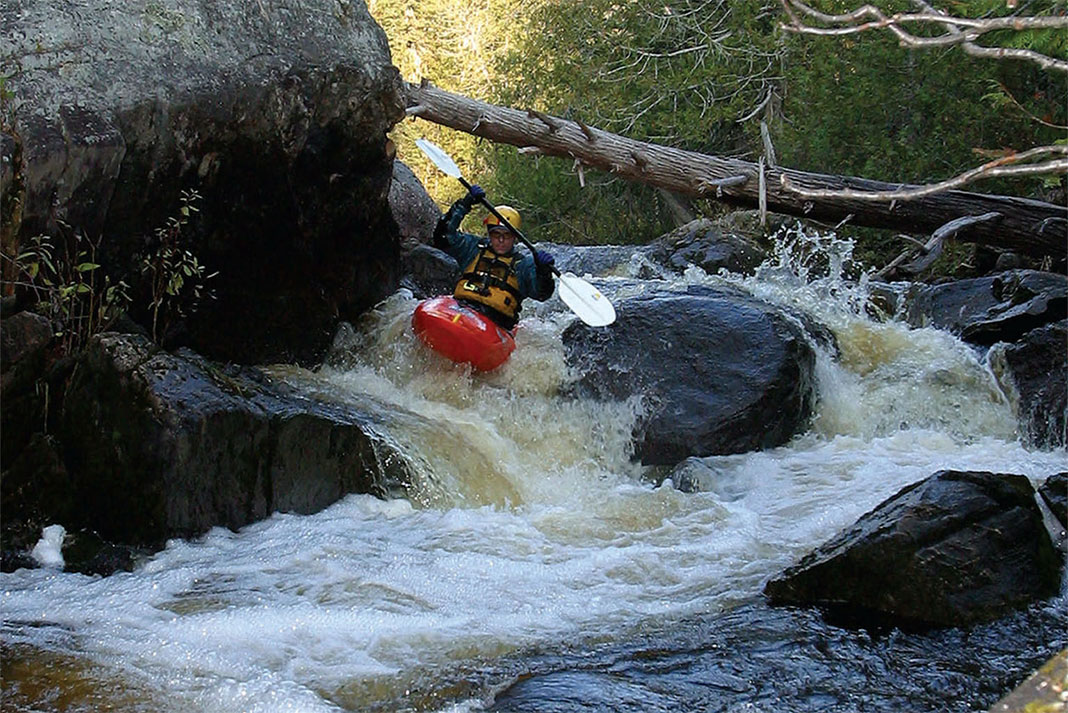
Heading out from Hearst
After a good night’s sleep we drive west out of Hearst to a little green sign fastened to a bridge. There we find three locals, pouring over a topographic map spread on the hood of a pickup: Jean Lecours, Gilles Levesque and Jean-Guy Brunet, the town’s aquatics director. In Hearst, taking magazine editors and friends down local rivers falls under the aquatics director’s job description. When I joked with Jean-Guy about skipping work with the mayor’s blessing, we were sliding into the current of Skunk Creek, downstream to where the water dropped over a misty horizon line and the rush of moving water echoed in the alders. Jean-Guy just smiled and asked if I could swim. “It might be nice,” I thought as I strapped into my tiny open canoe (locals were in Pyranha H3 creekboats), “to have Jean-Guy the lifeguard along for the ride.”
Jean-Guy was a student in one of those early whitewater classes. “I fell in love with the sport and decided that this will be a nice program to start at the pool,” he told me as matter-of-factly as if he was starting a book club at the local library.
“It will be good for the region because we have lots of rivers with rapids nearby.”
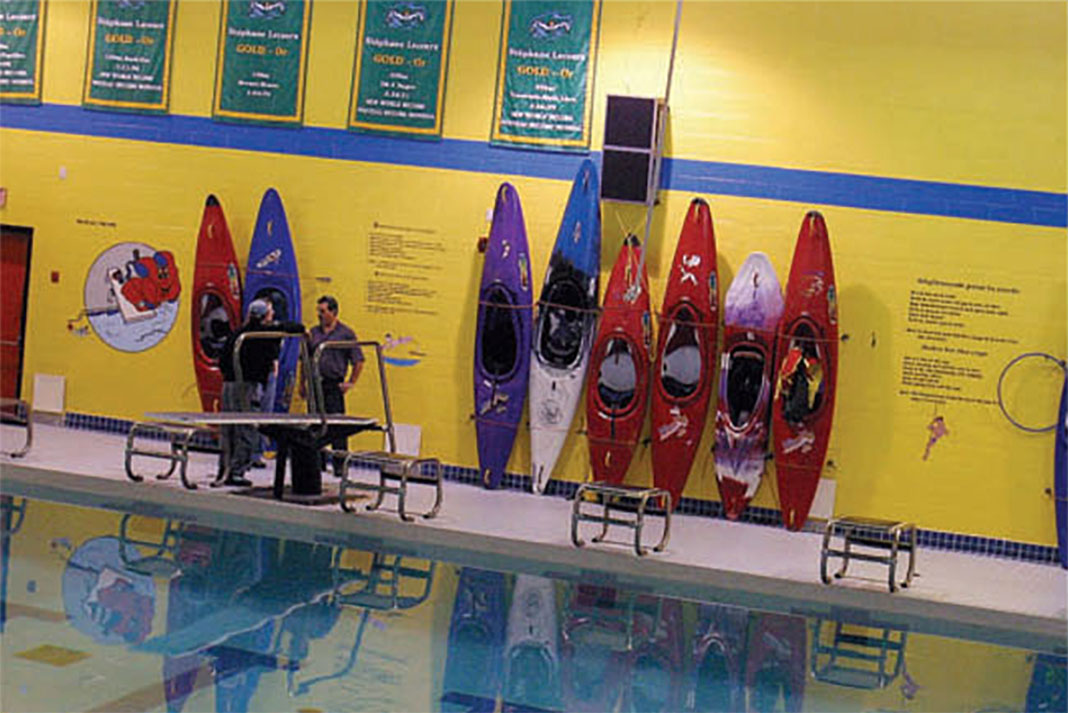
Two kilometres from the downtown Tim Hortons there is a class II–III whitewater stretch of the Hearst River. We all agreed if this section were anywhere else, there’d be slalom gates and manmade play features, but here in Hearst there is nothing. Just a beautiful river flowing beside a country road on the edge of town. Nobody had thought about kayaking it.
“It will be good for the region because we have lots of rivers with rapids nearby.”
After his first paddling course, Jean-Guy set to work immediately to acquire a grant from the Ministry of Culture, Tourism and Recreation, with which he brought in instructor trainer Lee Chantrel and, once again, Mark Long, to run a whitewater rescue program. Jean-Guy turned to local businesses and fundraisers to raise the money to purchase 12 kayaks for the pool so the Town of Hearst could offer its own courses. Standing on the pool deck surrounded by the town’s fleet racked on the wall, Jean-Guy tells us proudly that each year 20 to 30 high school students, 24 kids in the summer programs and dozens of adults learn to paddle on the rivers surrounding Hearst.
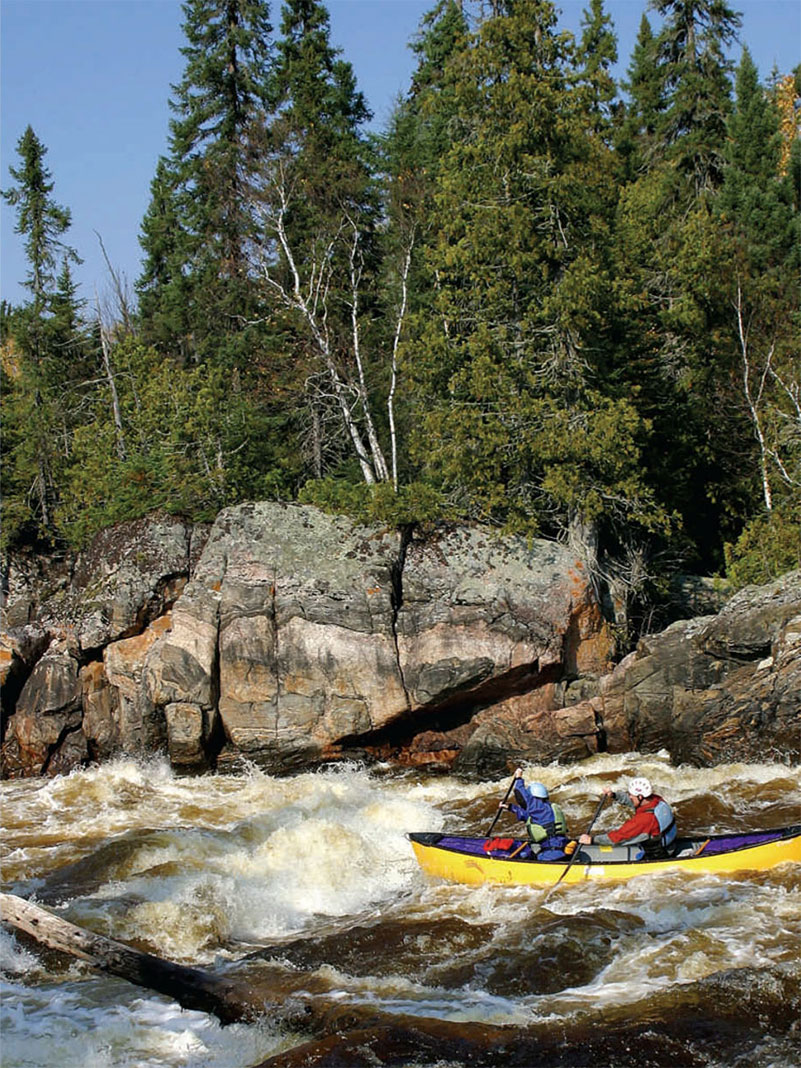
Sizing up the Skunk’s whitewater
Most of northern Ontario’s whitewater runs begin high on the Precambrian Shield and pour down off the rocks working their way north to the James Bay Lowlands and eventually the Arctic Ocean. Highway 11 runs along the Clay Belt region straight across this prime whitewater playground, slicing the runs nicely into upper and lower sections with ideal road access.
From the highway, Skunk Creek, like all the rivers, looks flat. With hardly enough time to get warmed up, the Skunk narrows and pours off the Clay Belt over the first drop—the drop we could hear from the highway. Unlike rivers closer to the cities these northern runs are paddled so little the rapids don’t have names and the trails along the river’s edge border only the deep pools, tramped by trout fishermen, not paddlers.
Over this five-mile section, the Skunk falls 120 feet. You could think of it as having a six-foot waterfall every couple of end zones for 80 football fields. But the sidelines are not flat and open, but rather treed to the edges and choked with logs.
The Skunk is a combination of clean waterfall drops and cascading waterslides with only a few inches of water between our boats and the rocks below. At times the creek is pinched so tightly between canyon walls we scrape our paddles and knuckles off the rocks as we launch off the lips.
As far as anyone knows, the Skunk, like many of the local rivers, was first kayaked by Remi LeClair, a legend on any paddling gauge. Remi, as the story goes, bought his first kayak in ’97, a used River Runner R5, and was the lone kayaker for a while. No one else had any equipment or seemed interested. Finally his best friend, Guylain Baril, found a boat and the two taught themselves to roll on the rivers surrounding Kapuskasing and then decided to go exploring the bigger rivers on the west side of Hearst.
They’d fished some sections and seen the gradient and etches of the Shekak River on the topographic maps and decided that it would be good whitewater. “Looking back on it now, we should not have survived that first descent [of the Shekak]. Just imagine the early spring-flooded Shekak with no wetsuits, no drytops, no neoprene gloves, no helmets and worst of all no idea what was downstream. I will admit we went too far too fast…. A little bit of scouting and no plans to portage anything, we never asked ourselves, ‘Are we doing this one?’ It was always, ‘Which line do we take?’”
Together they pioneered many of these rivers, rivers on par with the best of the plastic-filled rivers of eastern Ontario and Quebec. And two years later during those first whitewater instructional courses, Remi heard the group was looking for a potential teaching river. He humbly offered to guide the group down the Shekak.
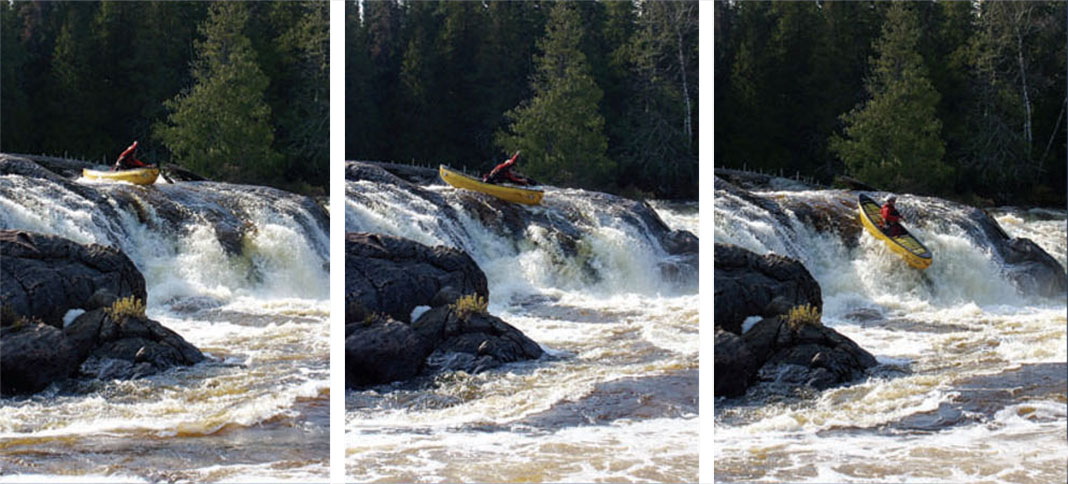
Onto the Upper Shekak
The green sign for the Upper Shekak is just above another sign for a roadside picnic area half an hour west of Hearst, just before Highway 631 heads south to Hornepayne. The put-in is a perfect place to park a family camper for sandwiches, oblivious to the class III–IV whitewater hiding downstream. Mark Long describes the day run on the Upper Shekak as “amazing”:
“It’s pristine, technical, lots of rapids and a variety of lines ranging from easy to very challenging…. Something for every type of boater.”
Mark felt so strongly about the area, he and his family packed their bags in Toronto and headed north. “We’ve fallen in love with the region and we’ve made this place our home. We love the rivers and the people. I can’t imagine living anywhere else.” In 1999 they started Momentum Outdoors, a small outdoor company teaching paddling, running rescue and safety training and offering rafting on the Shekak as an alternative to egg salad at the put-in.
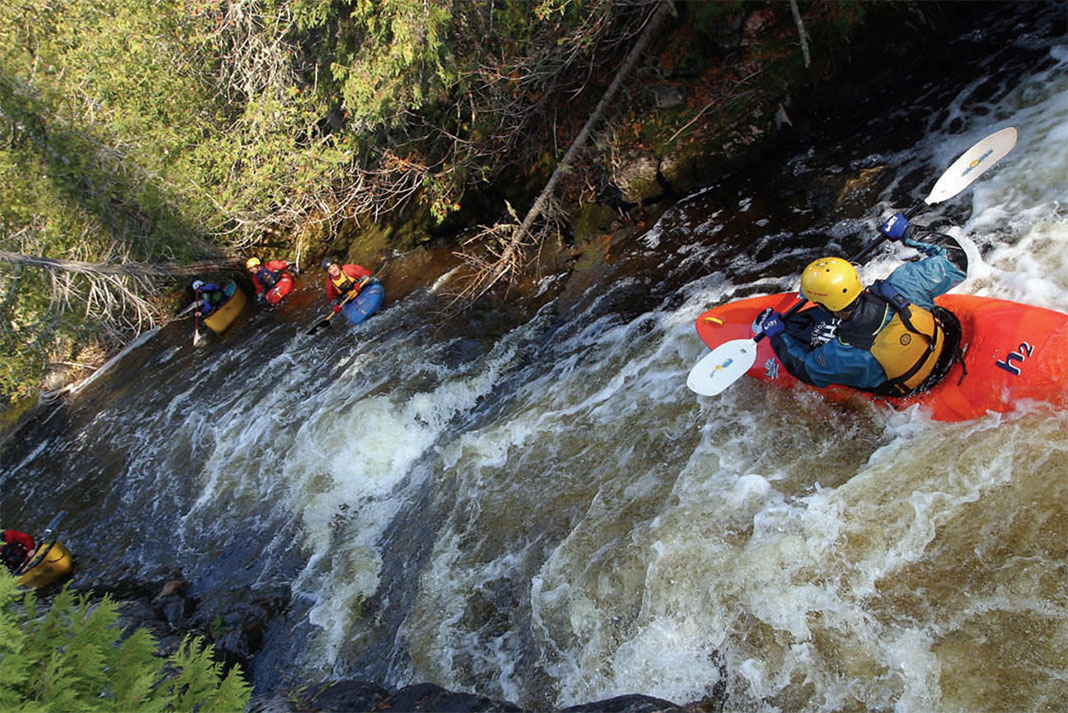
Gilles Levesque snuck out of work today to join us on the Skunk. He’s the controller at one of Hearst’s two mills and an integral part of the local kayaking scene. Gilles escaped small-town Northern Ontario to attend Ottawa University for a business degree and a law degree, becoming a CGA and a member of the Bar of Upper Canada. After a couple years of big business law life, he’s travelled the world, married in the Southern Alps, and moved to Hearst and now has three kids, two whitewater kayaks and a small Cessna floatplane.
“It’s pristine, technical, lots of rapids and a variety of lines ranging from easy to very challenging…. Something for every type of boater.”
Gilles is the local eye in the sky, turning best guesses at the size of unknown rapids into visuals from the air. Even more important, from the air he can scout the best access points in an otherwise virtually uncharted maze of logging roads. Apparently, he’s just confirmed another run only minutes from our run on the Skunk—a run they’ve noticed on the topo but haven’t got around to trying.
Skunk Creek guards its secrets well
Two kilometres before the Skunk meanders into the mighty Nagagami River, we take out beneath an abandoned railway bridge and scramble 115 feet of scree slope out of the canyon. We run shuttles on abandoned logging and mining roads and over trackless train bridges still spanning the gorges below until we are back out to the highway.
Tired, sunburnt, knuckles bloodied, we replay the day rapid by rapid. We all agree that this little creek and the nearby rivers are Hearst’s best-kept secrets. And we figure it’s likely to stay that way. Even with Cochrane’s polar bear and New Liskeard’s Holstein cow paving the way, it seems unlikely that this northern mill town will erect a larger-than-life 50-foot skunk as their mascot.
Scott MacGregor is the editor of Rapid.
Jean Lecours, bumping elbows with another unnamed drop on The Skunk. | Feature photo: Scott MacGregor



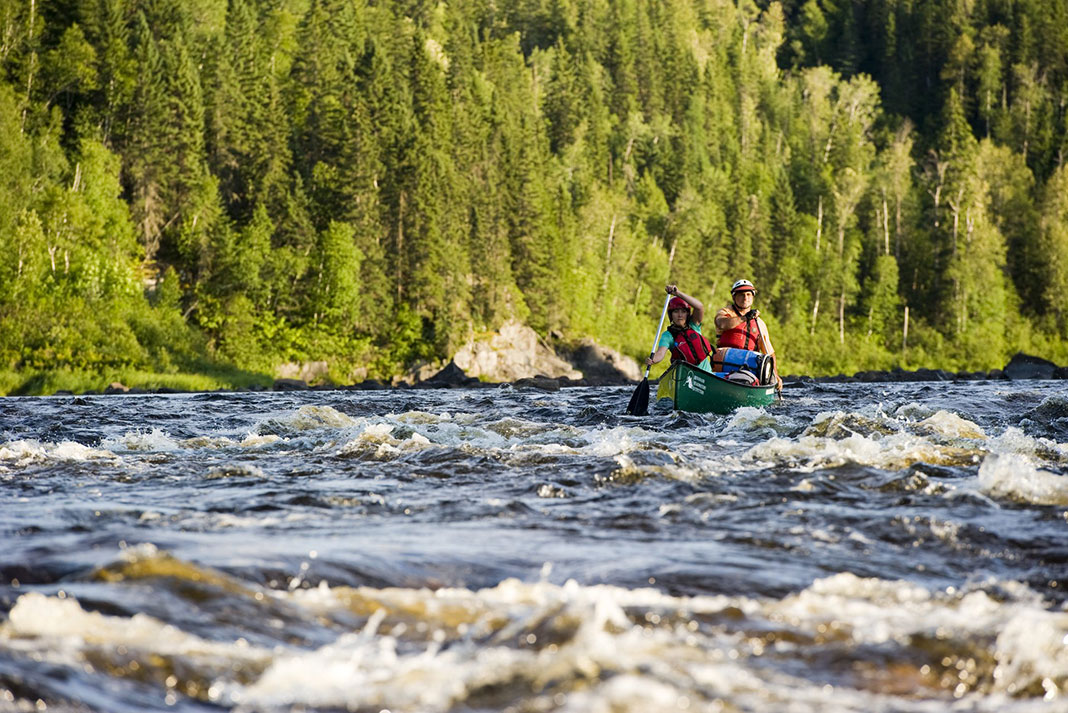
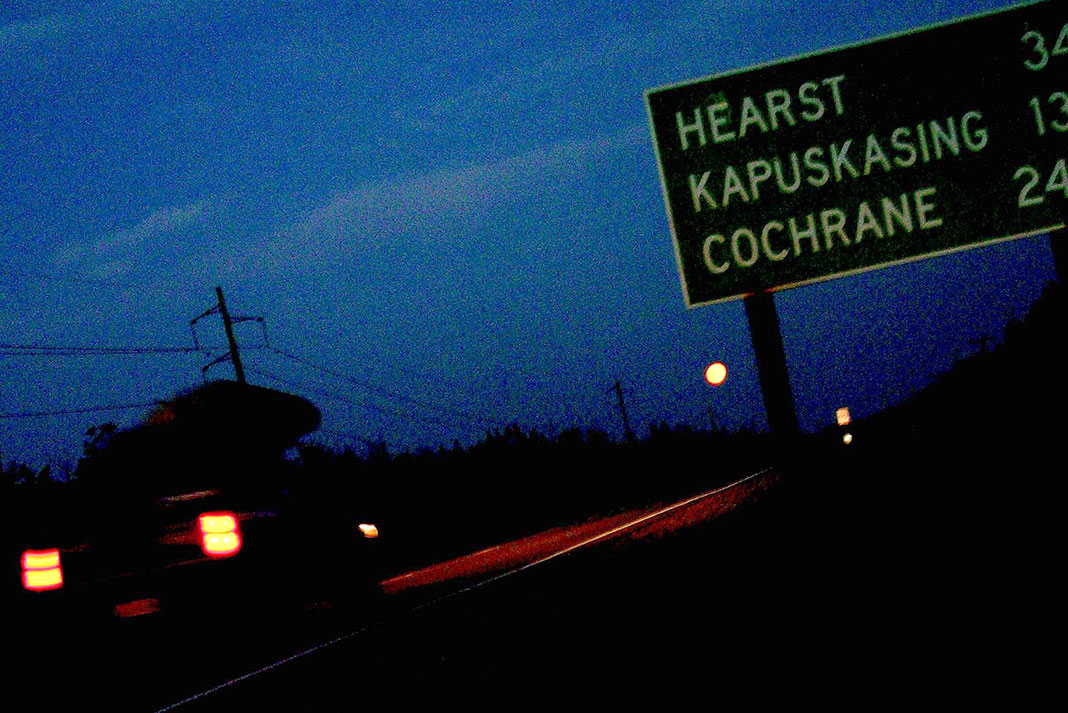
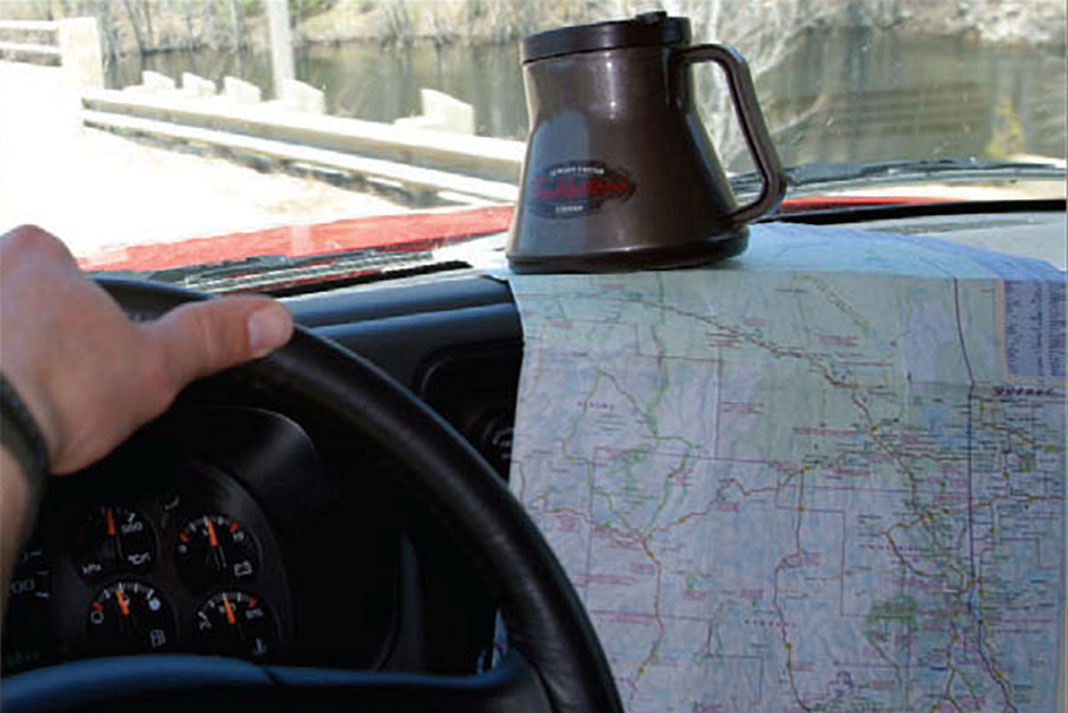
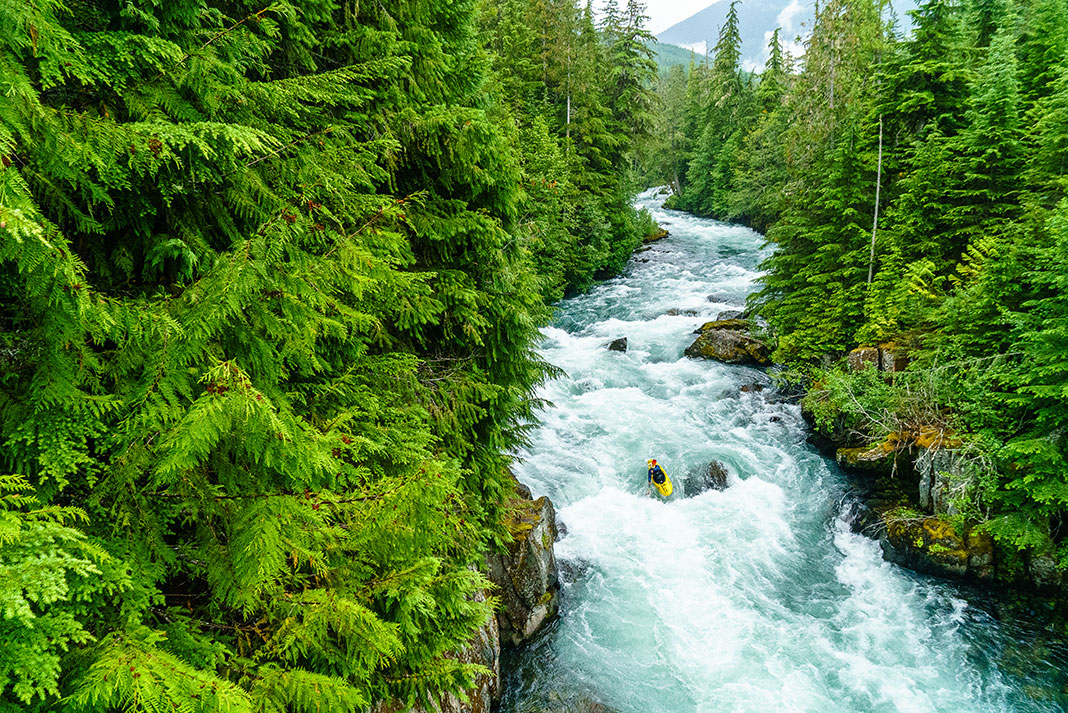
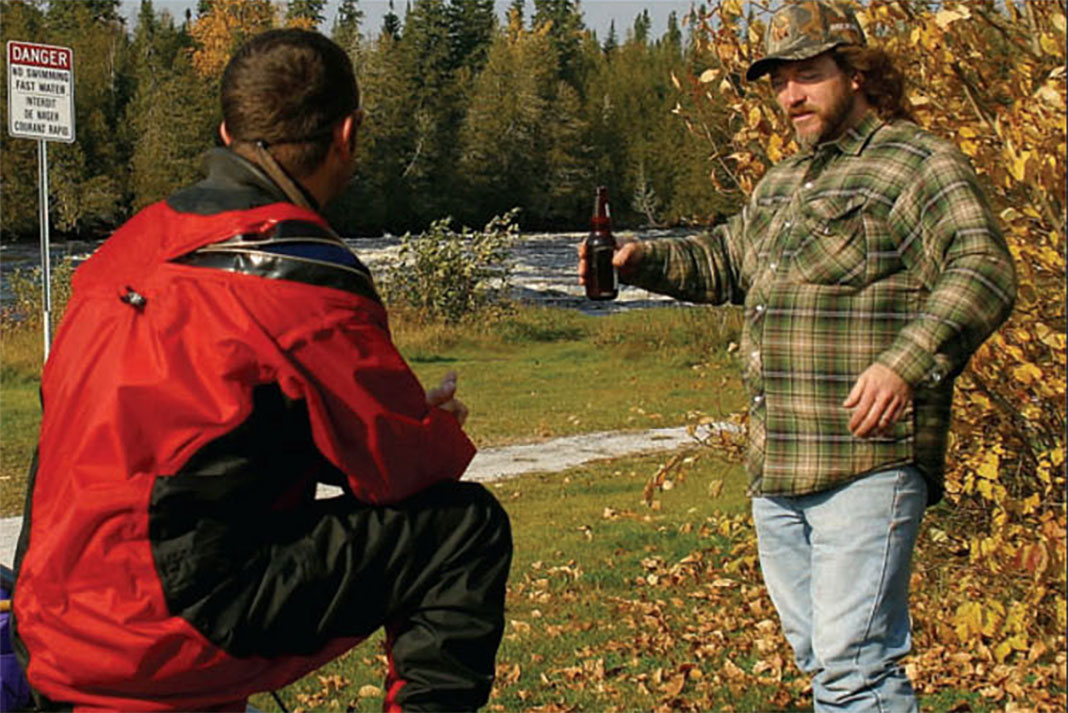
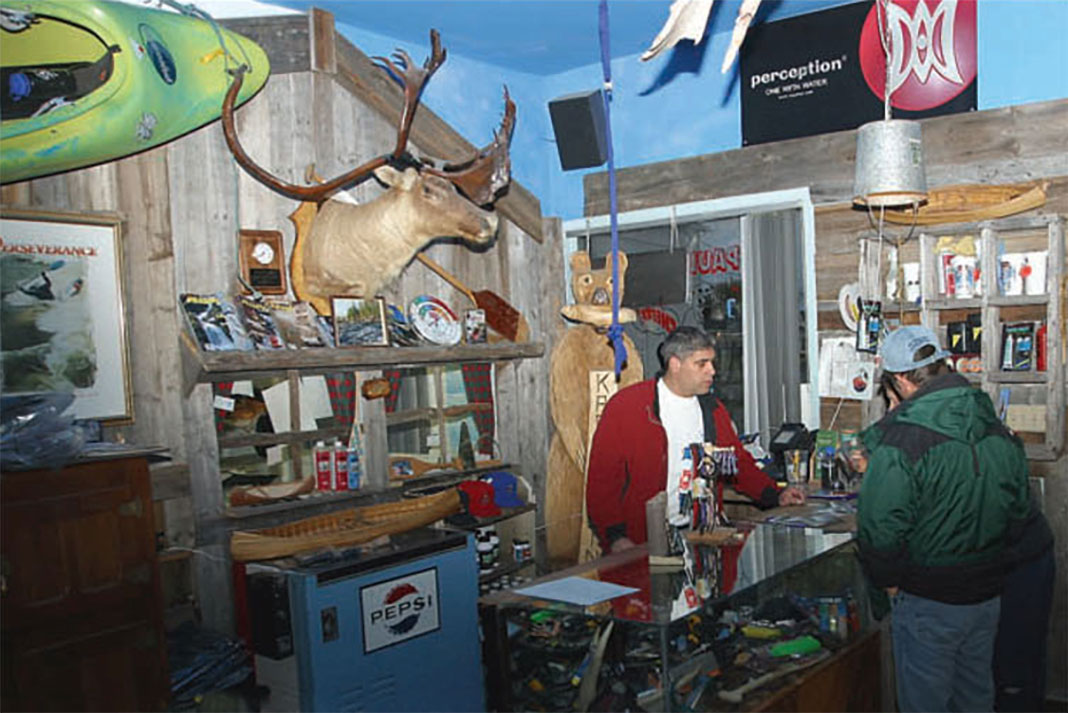
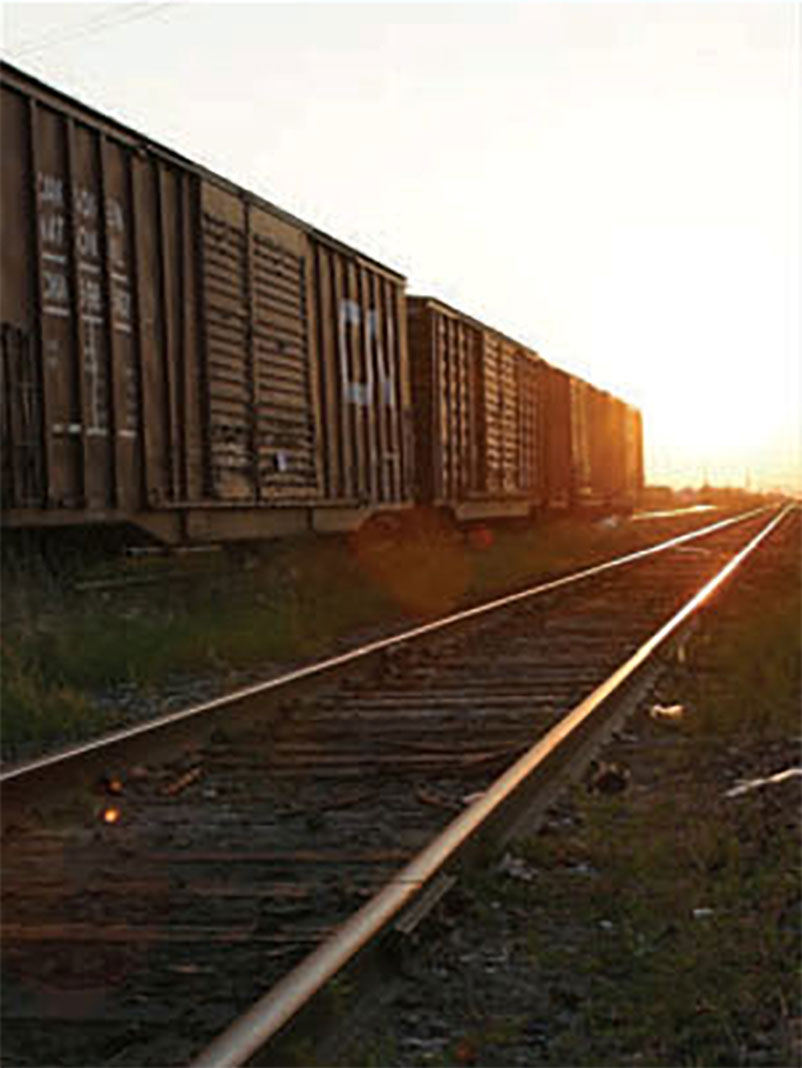
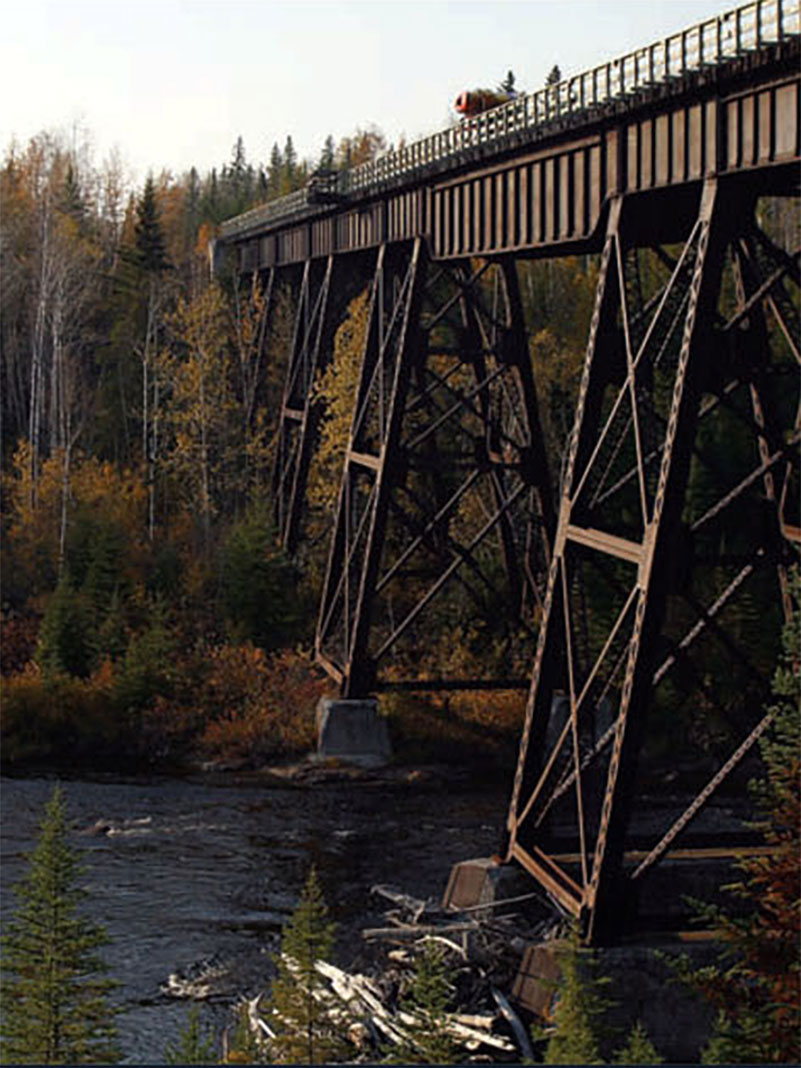
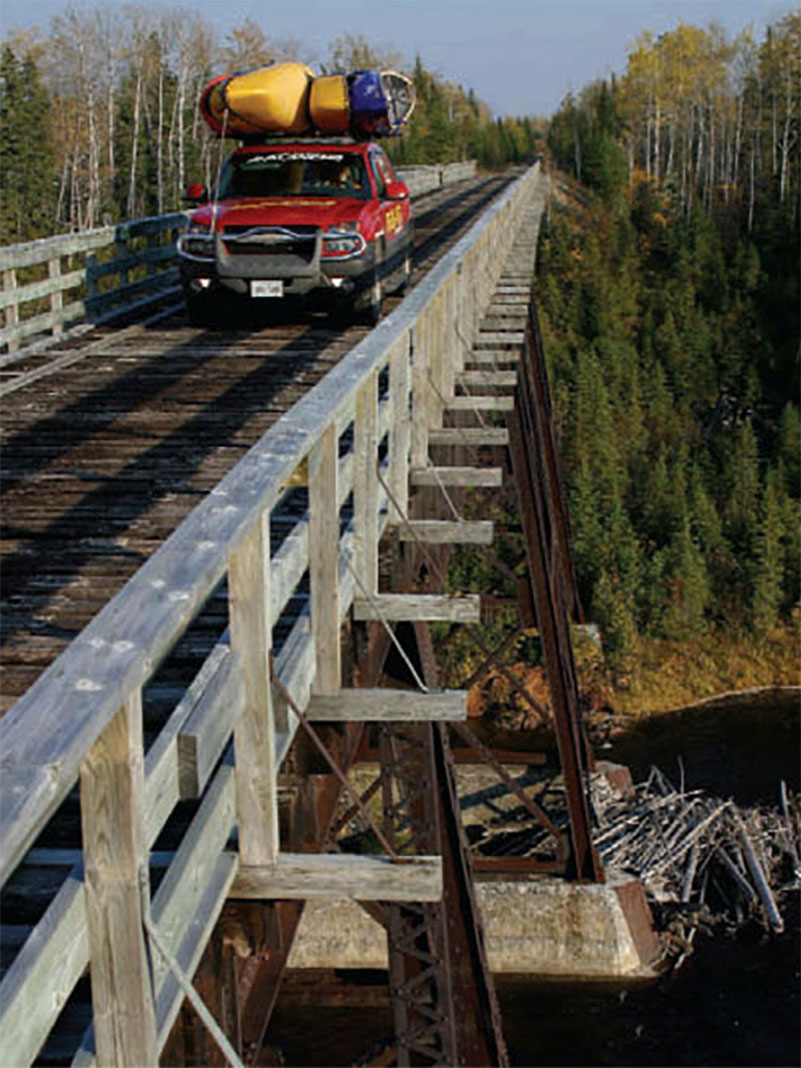
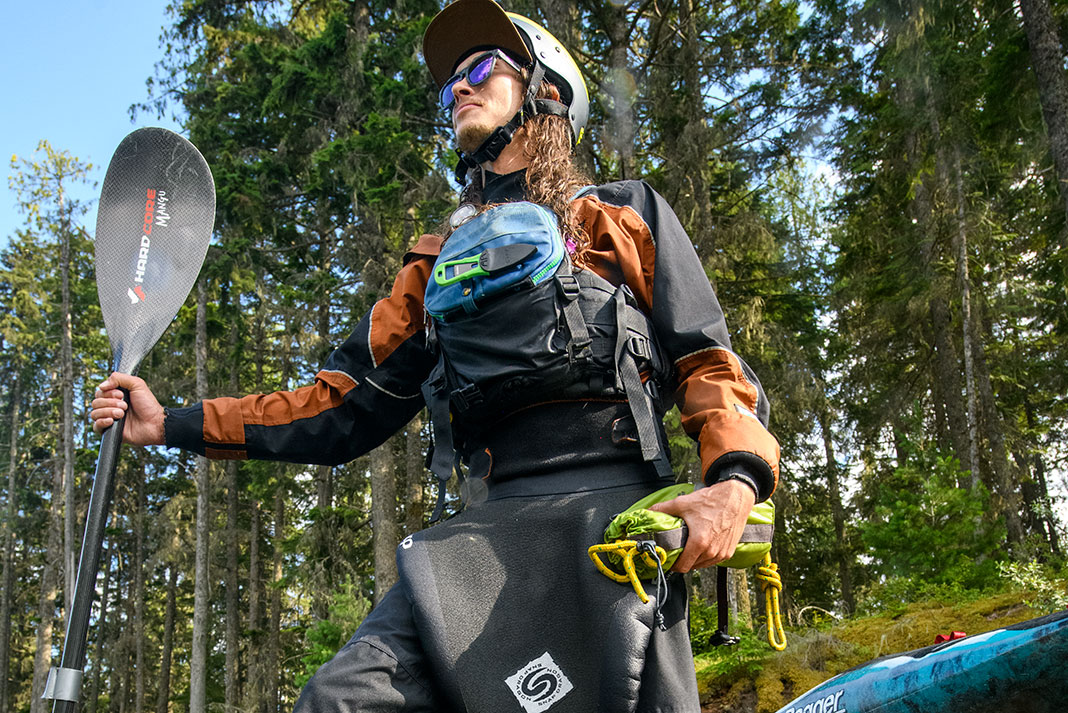
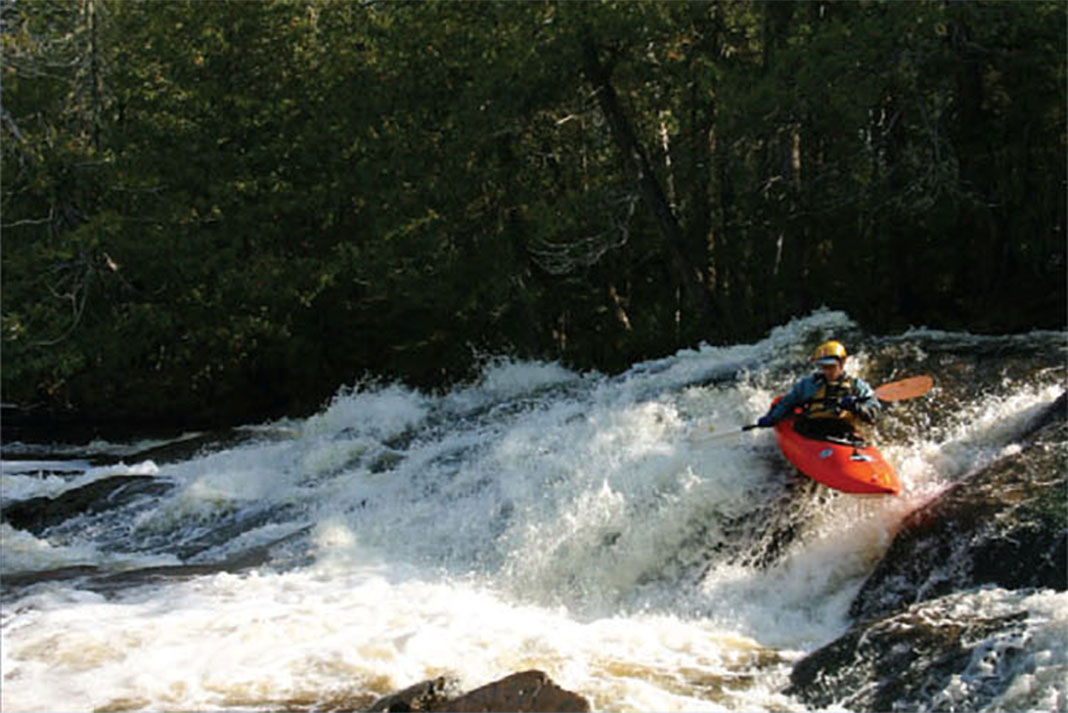
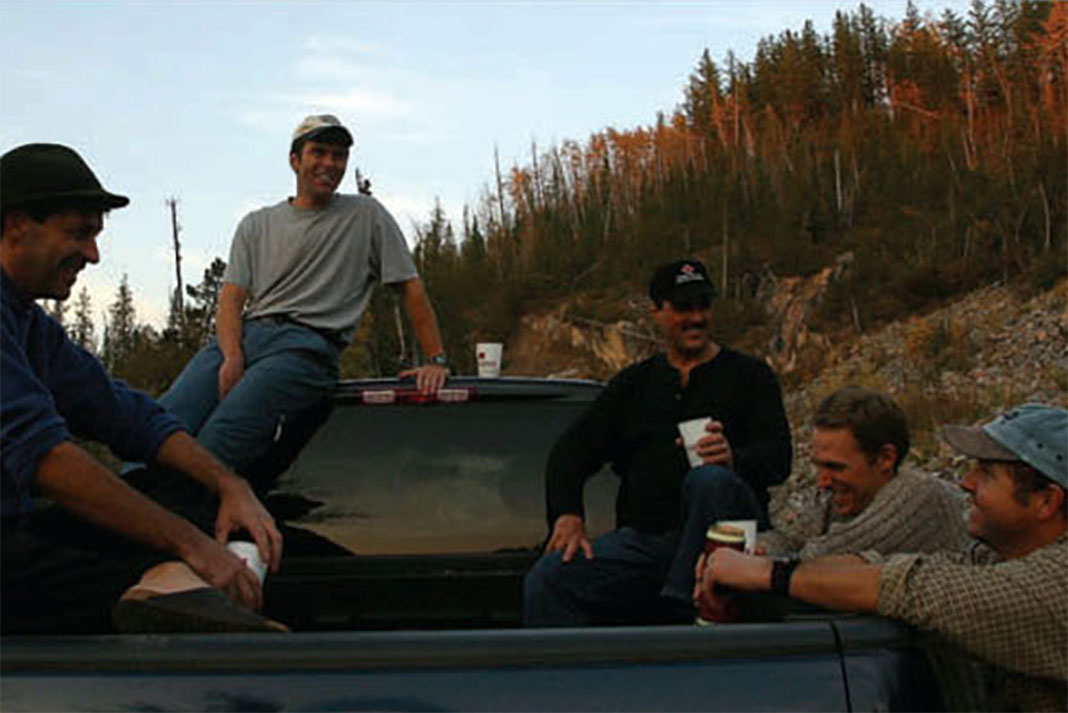
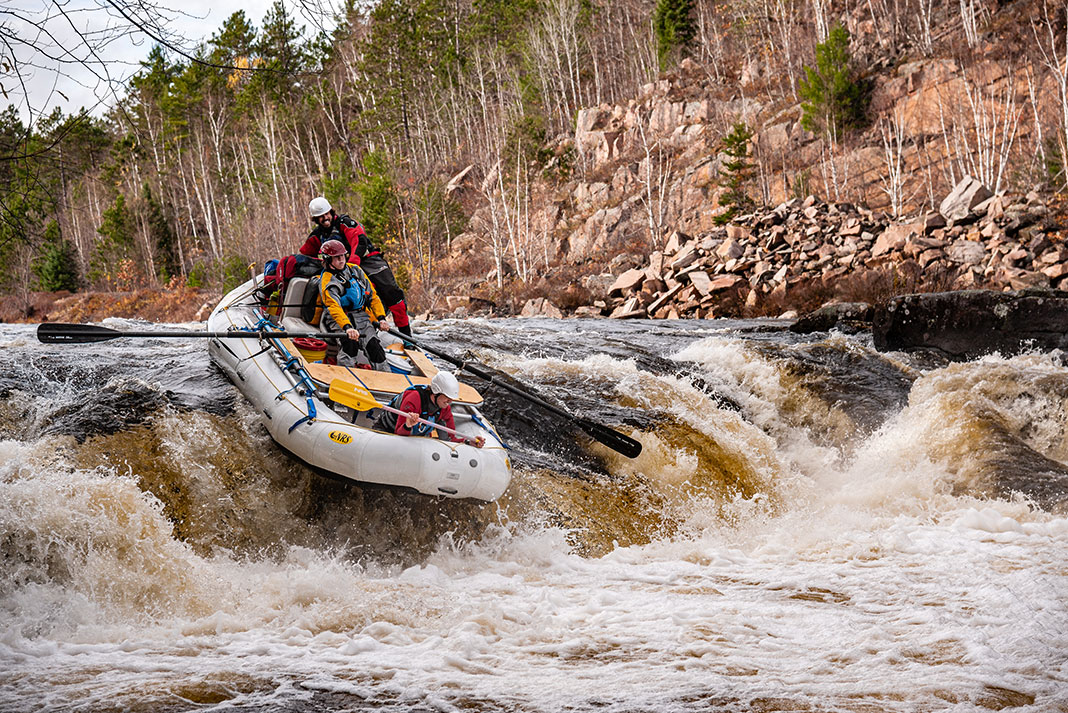
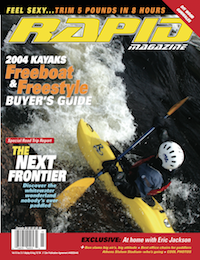 This article was first published in the Summer 2004 issue of Rapid Magazine.
This article was first published in the Summer 2004 issue of Rapid Magazine. 